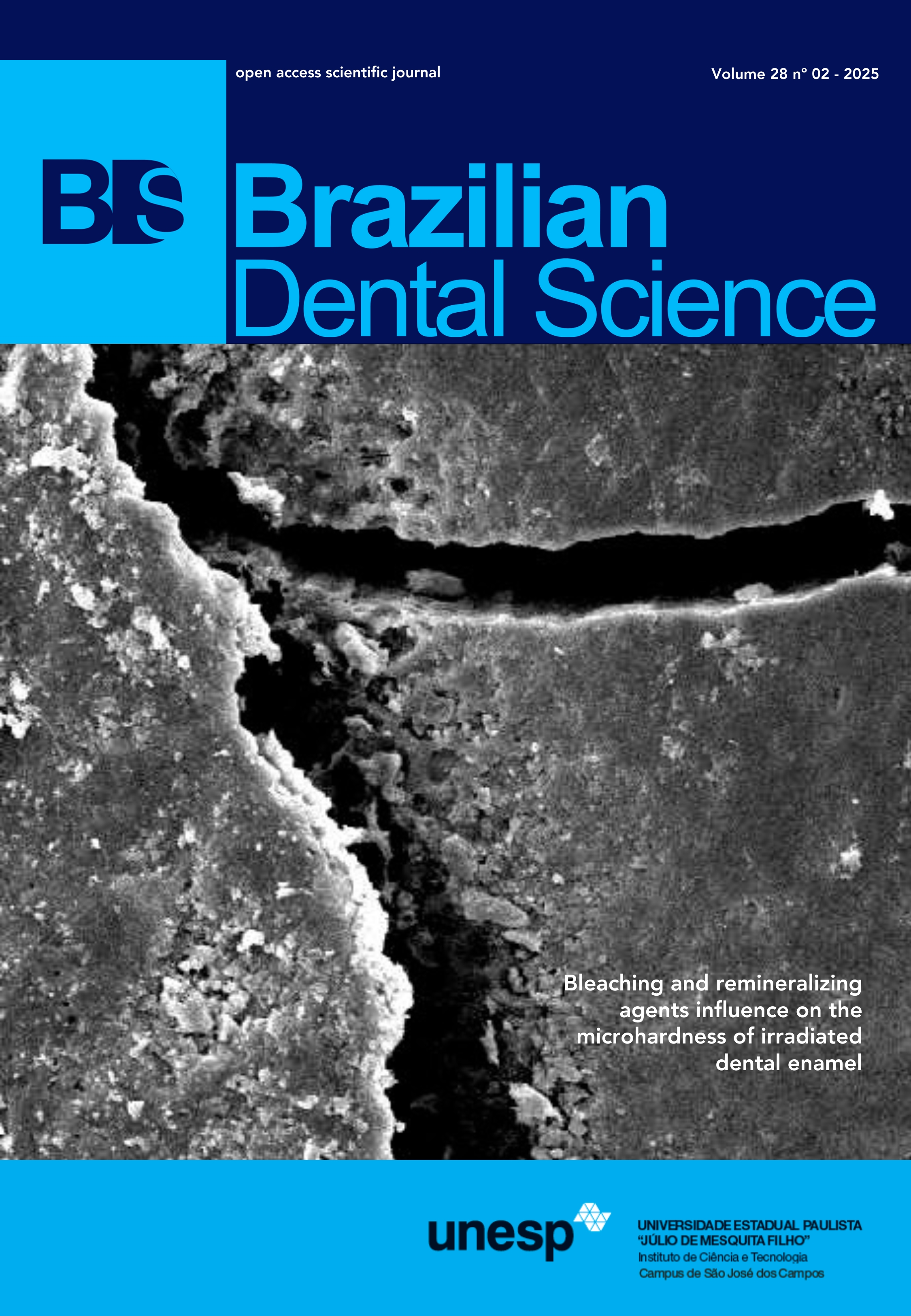Analysis of the efficacy of three cleaning protocols used to remove debris during endodontic treatment: a scanning electron microscopic study
DOI:
https://doi.org/10.4322/bds.2025.e4505Keywords:
Endodontics, Irrigation, Smear layer, Sodium hypochlorite, UltrasoundAbstract
Objective: Scanning electron microscopy (SEM) was used to investigate the cleaning and debris removal by passive ultrasonic irrigation (PUI), easy clean (EC), and prophylactic canal brush (PCB) in mandibular premolars. Material and Methods: Forty-eight single-rooted human teeth were divided into three experimental groups (PUI, EC and PCB) and a control group (CON). After access, they were prepared by irrigation with 1% sodium hypochlorite (NaOCl) up to instrument No. 40/.06 and longitudinally scored so that the specimens could be split. The split samples were taken to the SEM to detect the presence of debris and smear layer. Randomized final cleaning protocols were performed, and a second SEM image was taken for comparative analysis between groups. Kruskal-Wallis and then to the Student-Newman-Keuls tests were applied, both with p < 0.05. Results: No protocol was able to completely clean the canals. A significant difference was observed only in the cervical and middle region with PCB compared to the control group; in the other regions there was no significant difference between the techniques (p > 0.05). Conclusion: Under the conditions of the study, all techniques promoted cleaning of the examined regions of the canals, although none of the protocols completely removed debris from the canals. In the cervical third, PCB offered better results than the control.
KEYWORDS
Endodontics; Irrigation; Smear layer; Sodium hypochlorite; Ultrasound.
Downloads
Downloads
Published
How to Cite
Issue
Section
License
Copyright (c) 2025 José Valerio da Silva Horta, Ana Grasiela Limoeiro, Suyane Maria Luna-Cruz, Marco Antonio Húngaro Duarte, Elilton Cavalcante Pinheiro Junior, Nilton Vivacqua-Gomes, Bruno Carvalho de Vasconcelos

This work is licensed under a Creative Commons Attribution 4.0 International License.
Brazilian Dental Science uses the Creative Commons (CC-BY 4.0) license, thus preserving the integrity of articles in an open access environment. The journal allows the author to retain publishing rights without restrictions.
=================




























